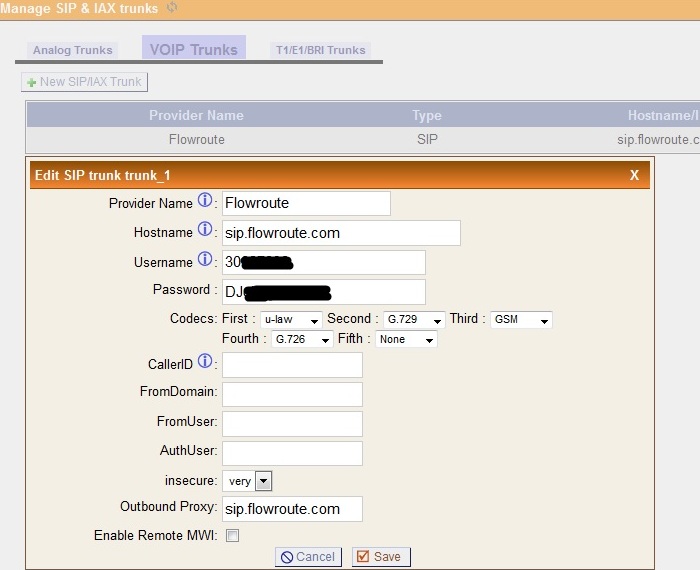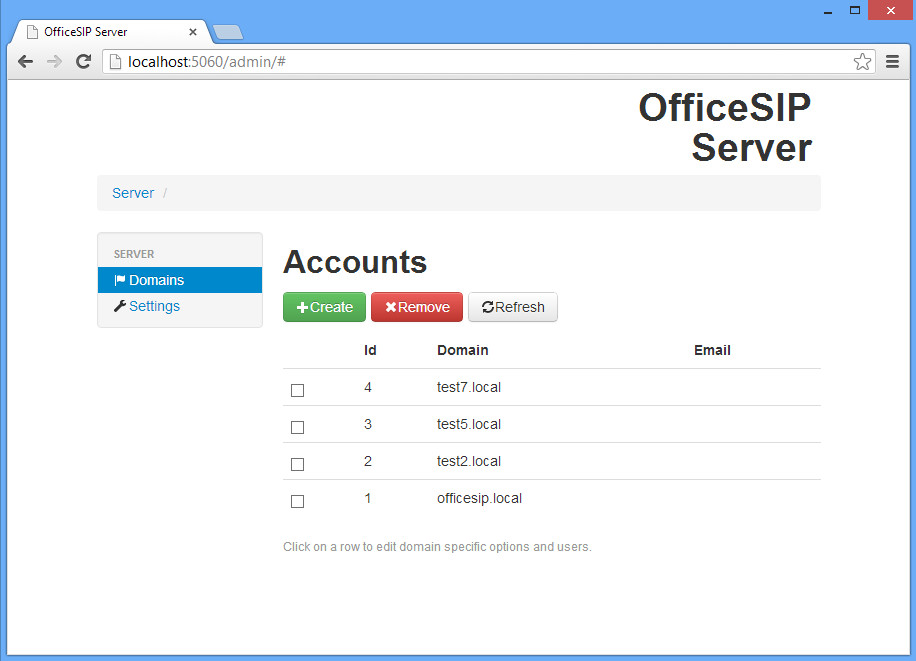-
Asterisk Sip Server Windows카테고리 없음 2020. 3. 6. 17:06


I ran Freeswitch along with FusonPBX for many years in a virtual machine on a server at home. Over the years things have changed, and I no longer need to have my server running 24/7. I switched out many of my virtual machines to small form factor PC's or Raspberry Pi's. Switching my VoIP server to a Raspberry Pi 2 has now given me the portability I wanted, and I can now easily take it from job to job without any hassle.I desperately wanted to install the new Freeswitch 1.6 onto my Raspberry Pi 2, but after hours of attempting to compile, and searching through forums, I could not get it to work. Freeswitch 1.6 made some significant changes and requires libraries available in Debian 8- Jessie which is what Raspbian - Jessie is based on. Many of the dependencies were not available at which point caused the compile to fail.

It doesn't appear that the Freeswitch team will be porting over 1.6 to the pi any time soon, as they have their hands full at the moment, so for my Raspberry Pi experiments, I move on to Asterisk.I have never used Asterisk before. Years ago, when I wanted to play around with VoIP, it seemed that Freeswitch had more to offer, they seemed to be attempting Video support and I seemed to grasp the architecture better on how Freeswitch was structured. At the time there was a strong community behind both (and continues today), and Asterisk actually seemed a bit more popular, Freeswitch seemed like it was heading in the direction I wanted. I still plan on upgrading to 1.6 on a virtual machine at a later date, but today I need a small, portable unit, so Asterisk for the win!UPDATE 20160310: I have successfully compiled Freeswitch 1.7 on a Raspberry Pi 2, I created a guide here:Things You'll Need. Raspberry Pi 2 (with Micro SD card of at least 4GB). SSH Client (terminal window in linux or program like putty).
Sip Client (either for your phone or PC) used to test connectivity (3cx, CSipSimple, etc)Installing Asterisk and FreePBXAsterisk, is an open source framework for developing communications applications. FreePBX is one of the many graphical front ends to configure and administrate asterisk. There's different options available on how to install either of these two onto your Raspberry Pi 2, but after many hours of failed attempts to get Freeswitch running, I decided to go with an easy option, a full distro with Asterisk and FreePBX already installed.- Getting the RasPBX distro onto your Micro SD CardYou'll need to download the latest image from, currently of this writing, it is the latest beta version raspbx.zip which is recommended for the Raspberry Pi 2. It comes with Asterisk 11.21.0 and FreePBX 13.0.51 pre-installed. 4GB card is also required.On a Windows computer, you can use Win32DiskImager and follow my guide here, and just substitute the Raspbian image for the RasPBX image, in the instructions.On a Linux computer, you can follow the steps belowDownload the RasPBX image onto your computer (If wget fails to download, I suggest you visit the RasPBX website to find the latest image available), it's a very slow download.it took me close to 2 hours.
Free Asterisk Server
SIPTAPI VersionsSIPTAPI comes in 2 flavors, either as 'free' or as 'commercial' version. The free version supports a single line only. The commercial version supports multiple lines and thus is suitable for Windows terminal servers. Furthermore, the commercial version supports inbound call indication.Free SIPTAPICommercial SIPTAPINumber of SIP lines140+Support for terminal serverneinjaInbound call indicationneinjaSource code & project filesjajaScreenshot of the configuration dialogYou can download the free SIPTAPI from the Sourceforge project website (see link on top of this page). Please us for information about the commercial SIPTAPI. Integration with Proprietary SystemsThe SIPTAPI software is not a complete TAPI application - SIPTAPI is only a 'TAPI provider'.
To use the Windows telephony features you also need a 'TAPI application' which uses the TAPI providers to initiate calls. The most simple and universal available TAPI application is 'Phone Dialer' (dialer.exe) which comes with Windows. Another worth mentioning TAPI application is the freeware ' (do not confuse with Phoner Lite). Phoner is especially useful for testing purposes as it is used for SIPTAPI testing. Using Phoner you can find out if the problems are within SIPTAPI or your proprietary TAPI application.If your CRM application supports TAPI natively, there is no need for an explicit TAPI application.But if your CRM application does not support TAPI, or for example you use a web-based CRM application, there is another useful tool:. Dial.exe is a small command line utility which initiates phone calls using the default TAPI dialer (usually dialer.exe). Dial.exe can be integrated via the command line or via the callto: and sip: URL handler.
Note: dial.exe can not be used on Windows terminal servers (Citrix).